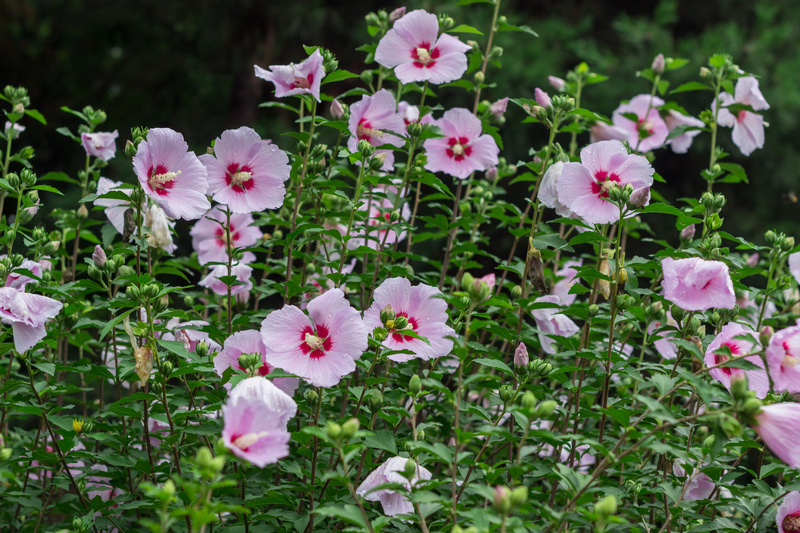Designing for the Wind: Smart Garden Strategies
Posted on 02/09/2025
Designing for the Wind: Smart Garden Strategies
Gardening is often seen as a tranquil hobby, but for those living in wind-prone regions, it quickly becomes clear that wind can be a gardener's most formidable adversary. Designing gardens for the wind involves more than just selecting hardy plants. It's about creating a resilient, beautiful, and thriving outdoor space that works in harmony with nature's breezes and gales. In this comprehensive guide, you'll discover expert smart garden strategies for windy areas, from innovative windbreaks to plant choices, layout tips, and protective structures.

Understanding the Impact of Wind in the Garden
Wind profoundly influences garden microclimates, soil moisture, plant health, and overall design. High-velocity winds can desiccate leaves, uproot fragile plants, erode soil, and make gardening less enjoyable. Understanding how wind behaves in your landscape is the first step towards effective garden planning.
Why is Wind a Challenge in Garden Design?
- Increased Evaporation: Strong winds can rob soil and plant surfaces of moisture, leading to dehydration.
- Physical Damage: Plants with delicate stems or large foliage are susceptible to breakage or windburn.
- Soil Erosion: Wind can strip away topsoil and nutrients critical for plant growth.
- Pollinator Disruption: High winds deter bees and butterflies, impacting pollination and fruit set.
- Uncomfortable Spaces: Windy zones can make outdoor living less enjoyable for people and pets.
Step-by-Step Strategies for Wind-Resistant Garden Design
1. Assess Your Wind Patterns
Every garden has unique wind characteristics. Assess the prevailing direction, speed, and frequency of winds using simple tools like wind socks or flags. Observe how your current landscape reacts after storms. This information is vital for strategic layout and plant placement.
2. Design Effective Windbreaks
The cornerstone of any wind-tolerant garden design is the windbreak--barriers that deflect, filter, or slow down the wind before it reaches sensitive areas.
- Living Windbreaks: Dense hedges, rows of trees or tall shrubs are natural solutions. Opt for staggered plantings rather than a single row. Evergreen species offer year-round protection.
- Fences and Screens: Permeable materials (like lattice, woven willow, or bamboo reeds) disrupt wind more efficiently than solid barriers, which can create turbulence on the leeward side.
- Strategic Placement: Place windbreaks at right angles to prevailing winds and extend their length beyond the area you want to protect for maximum effect.
3. Layer Plantings for Wind Filtration
Layering garden beds with a blend of groundcovers, perennials, shrubs, and trees emulates natural wind filtration systems. By gradually reducing wind speed, layered plants prevent sudden gusts from reaching vulnerable blooms.
- Tall Trees: Act as the first line of defense. Choose resilient varieties like wind-firm conifers, pines, or ornamental grasses for coastal gardens.
- Medium Shrubs: Provide a buffer and stabilize the garden, using dense types such as viburnum or escallonia.
- Low-Growing Groundcovers: Help prevent soil erosion and lower wind's impact at ground level.
4. Select Wind-Resistant Plants
Some plants naturally thrive in windy garden environments. Choose those with flexible stems, small or narrow leaves, and deep root systems.
- Ideal Trees: Pines (Pinus spp.), juniper, alder, hawthorn, and olive.
- Best Shrubs: Rugosa roses, cotoneaster, escallonia, hydrangea, and viburnum.
- Hardy Perennials: Lavender, ornamental grasses, heuchera, yarrow, and sea holly.
- Groundcovers: Thyme, sedum, vinca, and ice plant.
5. Optimize Your Garden Layout
Designing with the wind in mind involves creative arrangement of beds, paths, and structures to protect plants and make outdoor spaces more enjoyable.
- Zoning: Place delicate plants behind taller wind-tolerant species or structures.
- Courtyard Layouts: Enclosed gardens, U-shaped or L-shaped beds offer additional protection and create inviting microclimates.
- Garden Rooms: Divide large areas into smaller zones using hedges, screens, or trellises to break up wind flow and promote tranquility.
6. Employ Structures for Wind Security
Physical structures bring flexibility and added protection to any garden design for windy sites.
- Arbors and Trellises: Offer filtered wind protection while supporting climbing plants such as clematis or honeysuckle.
- Solid and Permeable Fencing: Use solid sections for privacy, interspersed with slatted panels to reduce turbulence.
- Shade Sails and Outdoor Screens: Multi-purpose structures that offer shade and reduce windy blasts in seating areas.
7. Stabilize and Protect the Soil
Protecting your garden's soil is as crucial as shielding plants from the wind. Erosion control begins at ground level.
- Mulching: Apply organic mulch to retain moisture and anchor the soil.
- Groundcovers: Living carpets prevent bare soil exposure and add beauty.
- Raised Beds: Reduce soil compaction and can be shielded by windbreaks more easily than open ground.
Creative Windbreak Alternatives for Contemporary Gardens
Modern landscapes often demand innovative solutions that don't compromise on style or space. Here are some aesthetic and functional ideas to enhance wind-smart garden design:
- Vertical Gardens: Living walls not only block wind but also maximize greenery in compact spaces.
- Gabion Walls: Wire cages filled with stones provide robust windbreaks and a striking architectural focal point.
- Artistic Screens: Metal, acrylic, or sustainably sourced wooden panels can be custom cut for airflow and decorative impact.
- Strategic Furniture Placement: Use garden seating, raised planters, or storage solutions to double as wind buffers in patios and balconies.
Best Practices for Maintaining a Wind-Resistant Garden
Regular Inspection and Pruning
Stay vigilant! Inspect for broken branches or damaged foliage after storms. Prune regularly to encourage flexible, strong growth and eliminate hazards that could turn into projectiles on blustery days.
Flexible Staking and Supports
Support young trees and top-heavy perennials with stakes that allow for minor movement. Flexibility strengthens root establishment and helps the plant acclimate to windy conditions without snapping.
Adapt and Evolve
No landscape is static. As trees and hedges mature, they alter the site's microclimate. Be open to rearranging, replanting, or enhancing windbreaks as needed to keep your garden at its best.
Smart Irrigation for Windy Gardens
Because wind increases evaporation, efficient watering is vital in breezy gardens. The following smart irrigation practices will help conserve water and ensure your plants stay hydrated while thriving in wind-exposed spaces:
- Drip Irrigation: Delivers moisture directly to the root zone, minimizing evaporation loss present in overhead watering.
- Water Timing: Water early morning or at dusk, when winds are typically calmer.
- Moisture Mulch: Apply thick layers of water-retaining mulch around vulnerable plants.
- Rain Barrels and Water Sensors: Use smart tech to collect rainwater and schedule irrigation based on weather patterns.
Landscape Design Inspirations: Gardens That Defy the Wind
For some, the thought of gardening in a wind-prone area may seem daunting, but plenty of award-winning garden designs thrive in coastal, mountain, and open plains settings. Key takeaways from the world's best windy gardens include:
- Movable Features: Gravel beds, mobile planters, and rolling screens allow you to adapt the garden to changing seasonal winds.
- Gravel Gardens: Inspired by Mediterranean landscapes, these designs use drought-tolerant, wind-resistant plants in free-draining soil.
- Naturalistic Planting: A wild, layered look with prairie grasses and native shrubs that sway gracefully in the breeze.
- Clipped Topiary Hedges: For a formal look and robust wind protection all year round.

Bonus Tips for Windy-Site Gardeners
- Invest in tough garden furniture that won't blow away or deteriorate quickly.
- Use large containers over lighter pots to prevent tipping.
- Anchor garden ornaments and features securely with stakes or ground fixes.
- Establish a maintenance routine after storms: clear debris, check for plant damage, and amend soil as needed.
- Plant dense edges around vegetable plots; consider low windbreak fences or trellis netting for tender crops.
Conclusion: Embrace the Wind, Grow with Confidence
Smart garden design for windy areas isn't just about protection--it's about creating dynamic, resilient, and attractive landscapes that make the most of their environment. By understanding your site's wind patterns, incorporating layered plantings and creative windbreaks, and choosing robust, drought-tolerant varieties, you can transform even the breeziest plot into a lush, enjoyable sanctuary.
So the next time the wind howls through your garden, you'll be ready--with a landscape that bends, filters, and flourishes, whatever the forecast may bring.

